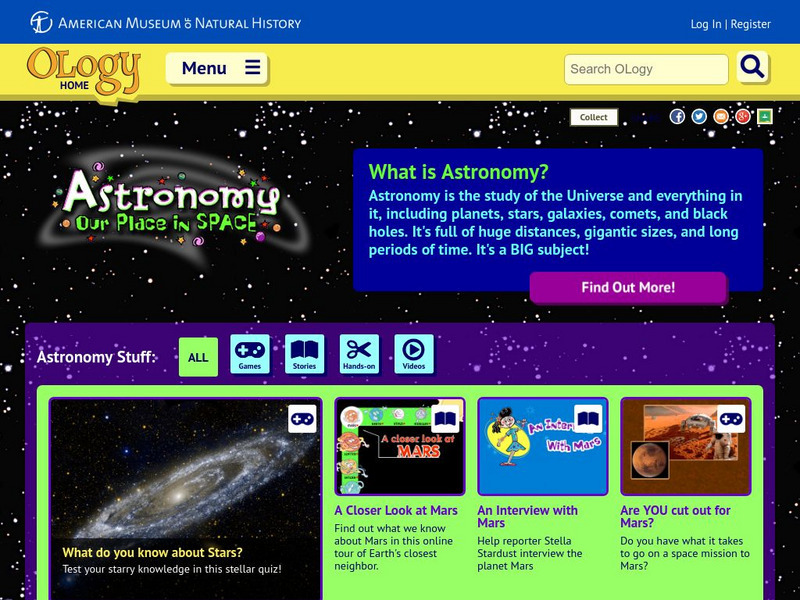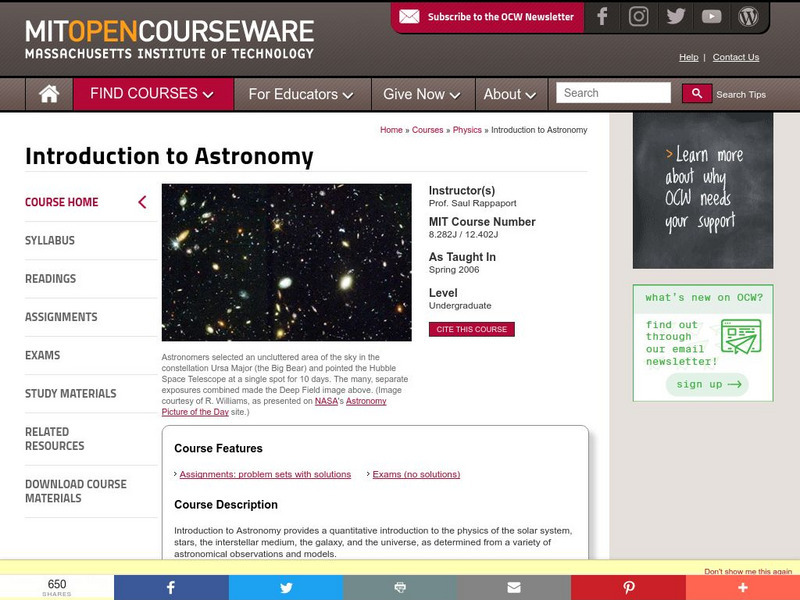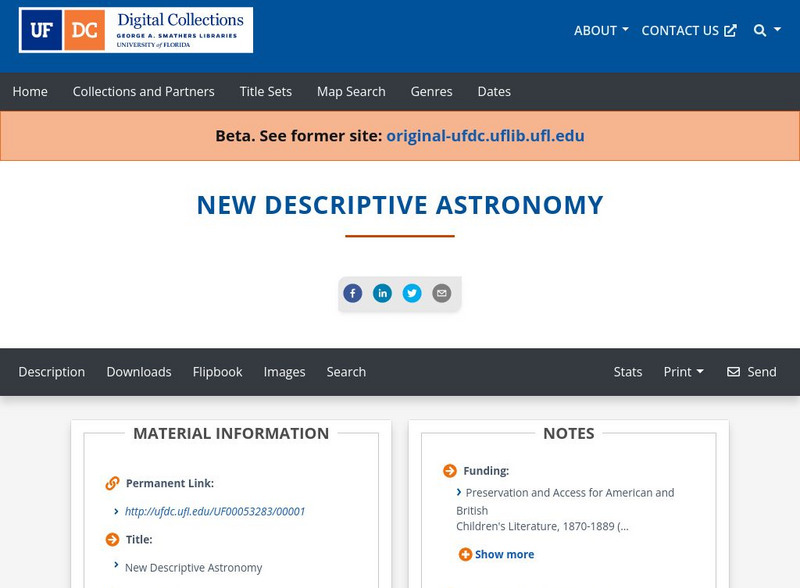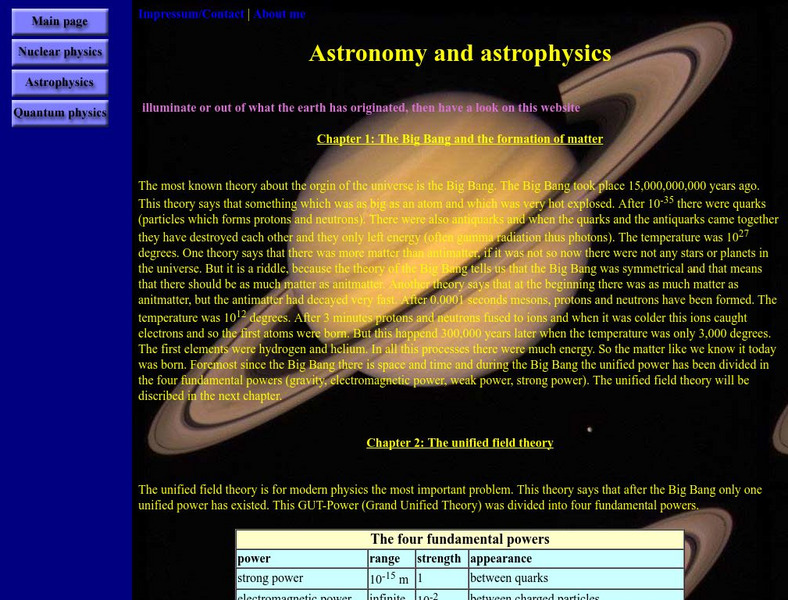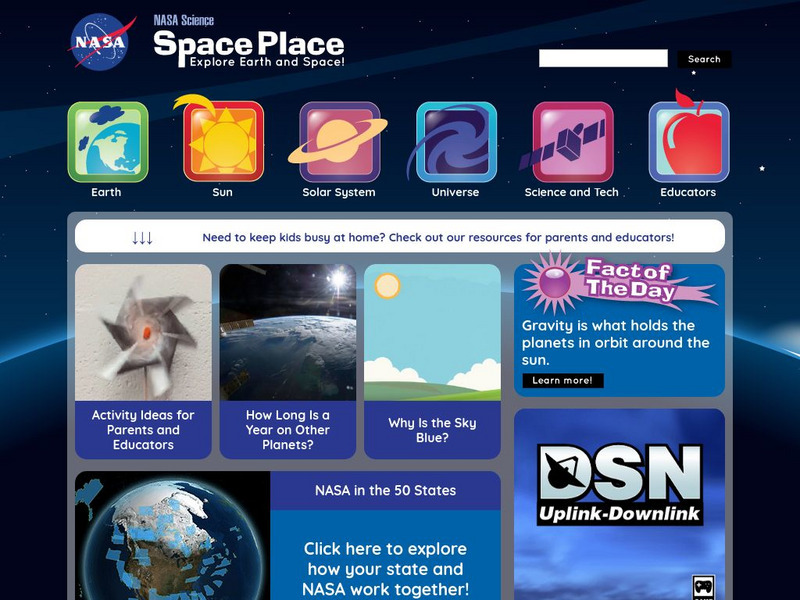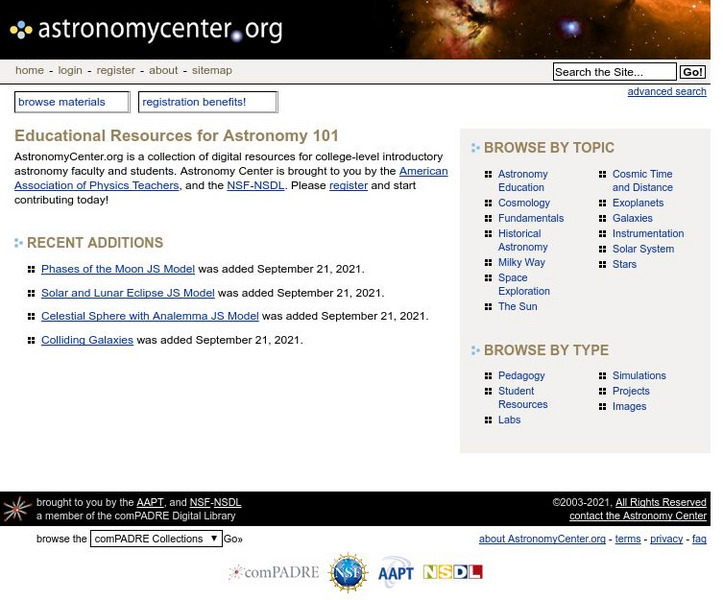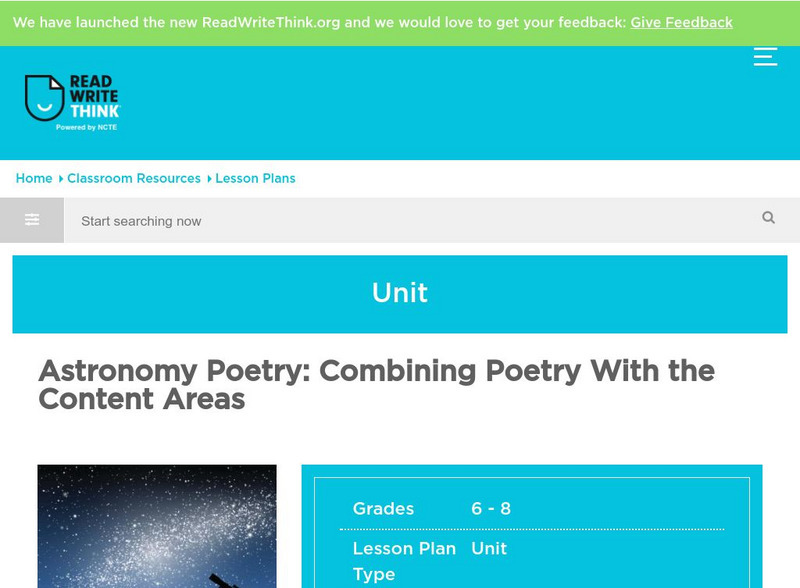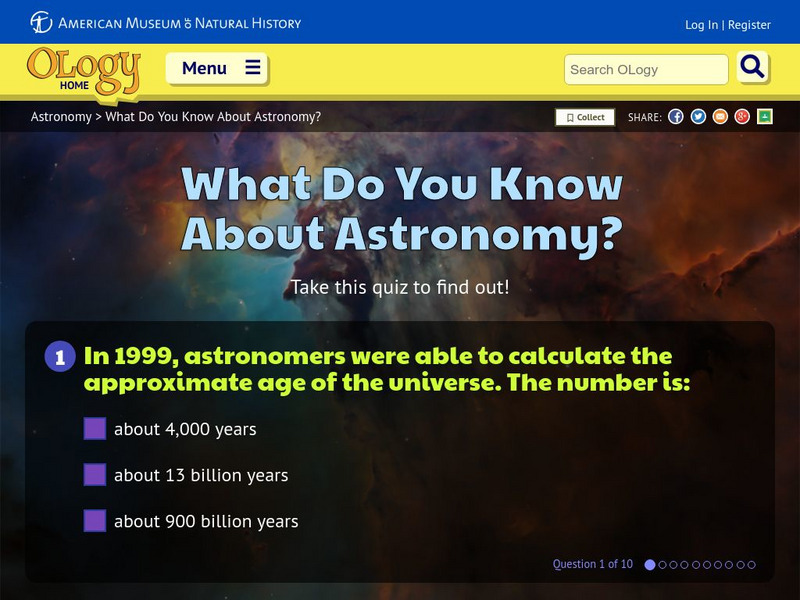Curated OER
Are There Other Neighborhoods Like Our Own?
Young scholars investigate the possibility of life existing on other planets. They conduct research using a variety of resources. The instructional activity includes an overview that is used for classroom discussion practices. They tell...
Curated OER
Are We Alone
Seventh graders collect/analyze data and draw conclusions; support reasoning by using a variety of evidence; construct logical arguments; access information at remote sites using telecommunications; apply the concept of percent;...
Curated OER
Exploring the Planets
Students research a planet and write a research report about a planet they choose. They import a graphic and add Word Art. They type a paragraph with a topic sentence and at least 3 supporting sentences using a word processing program.
Curated OER
Seashore Life
In this seashore life worksheet, students identify the animals that live on the seashore. Students then color the animals that live on the seashore. Students also draw and color any additional animals they would see.
Curated OER
Ancient Egypt: Domestic Life: Bartering
In this ancient Egypt worksheet, students read about bartering in the marketplace. Students find the value of 4 items and draw the things you could barter them for.
Curated OER
Star Magnitudes
In this stars worksheet, students use a chart comparing the absolute and apparent magnitudes for different stars to complete 4 fill in the blank and 2 short answer questions.
Curated OER
Lives of Stars
Students take notes on the lives of stars. In this lesson on stars, students take notes alongside a PowerPoint presentation about the lives of stars.
Curated OER
The Solar System
Students research the characteristics of planets in our solar system. In this space science lesson, students create a solar system model with each planet arranged according to their distance from the sun. They solve problems using the...
Curated OER
Soil Comparison and Analysis
Students perform tests on different soil samples. For this earth science lesson, students classify the soil into groups according to test results. They write a lab report following a certain criteria.
Curated OER
Make a Spaceship
Students create a spaceship, satellite, or space station. For this space lesson, students consider design elements for buildings and objects in space. Students use K'Nex, Legos, or other household materials for their creation. Students...
American Museum of Natural History
American Museum of Natural History: O Logy: Astronomy: Our Place in Space
This resource is a place for learning all about astronomy--stargazing, planets, space science, and interesting astronomical phenomena and discoveries. Explore, ask questions, find information, and meet American Museum of Natural History...
Massachusetts Institute of Technology
Mit: Open Course Ware: Courses: Physics: Introduction to Astronomy
A university-level introduction to basic astronomy. Includes course readings, assignments, exams, and study notes with links to images and to biographical profiles of famous astronomers.
Library of Congress
World Digital Library: Astronomy: Reaching for the Stars
In this article the contributions of the Islamic world to our knowledge of astronomy is discussed.
University of Florida
Baldwin Library: Steele's Sciences: New Descriptive Astronomy by Joel D. Steele
This is an online photocopy of the original text of the children's book Steele's Sciences: New Descriptive Astronomy by Joel D. Steele (c1884), an astronomy text for children.
Other
National Optical Astronomy Observatory Homepage
The National Optical Astronomy Observatory runs most of the big professional optical telescopes in the United States and this is their homepage. It includes information about the many facilities they run, some of the recent science...
Other
Astronomy and Astrophysics
This site is about Astronomy and Astrophysics. The site has plenty of information and links to related topics.
NASA
Nasa Space Science Data Archive: Astronomy and Astrophysics
NASA sponsored site dealing with several topics in Astronomy and Astrophysics. The site provides links to various topics.
University of Arizona
University of Arizona: Department of Astronomy and Steward Observatory
The University of Arizona operates Steward Observatory research website and the Department of Astronomy academic website.
Georgia Department of Education
Ga Virtual Learning: A Brief History of Astronomy
In this interactive module students will explore what different ancient cultures believe was an explanation of the stars and planets. They will look at how the work of Nicolas Copernicus revolutionize the world of astronomy and learn how...
NASA
Nasa: Star Child: Elementary Astronomy Unit
Learn everything you can about outer space with this interactive astronomy unit. 2 levels of difficulty with modules on the solar system, the universe, other "space stuff" and a glossary of terms. Links for parents and other great website.
American Association of Physics Teachers
Com Padre Digital Library: The Astronomy Center
A searchable collection of "curriculum materials, images, classroom demonstration, learning resources, evaluation instrumnets, and articles about approaches to astronomy education". Users can contribute materials by creating a free account.
ReadWriteThink
Read Write Think: Astronomy Poetry: Combining Poetry With the Content Areas
In this lesson, students listen to and discuss poetry that pertains to the study of astronomy and write their own poems to enhance their learning of the subject. As a final project, students use the ReadWriteThink Printing Press to...
American Museum of Natural History
American Museum of Natural History: O Logy: What Do You Know? Astronomy
Take this ten-question self-scoring quiz to test your knowledge of astronomy facts: age of the universe, why stars and planets are spheres, where other life might exist in the outer space, the Milky Way, and more.
Other
The Astronomy Cafe
NASA scientist Sten Odenwald calls this his "web site for the astronomically disadvantaged." Do you have lots of questions about space that you can't seem to get answers to? Would you like to learn about a career in astronomy, Big Bang...
Other popular searches
- Astronomy and Space Science
- Astronomy Vocabulary
- Planets and Astronomy
- Astronomy Activity
- Science Astronomy
- Ancient Astronomy
- Astronomy Lesson Plans
- History of Astronomy
- Space Science Astronomy
- Space and Astronomy
- Astronomy Navigation
- Astronomy History










